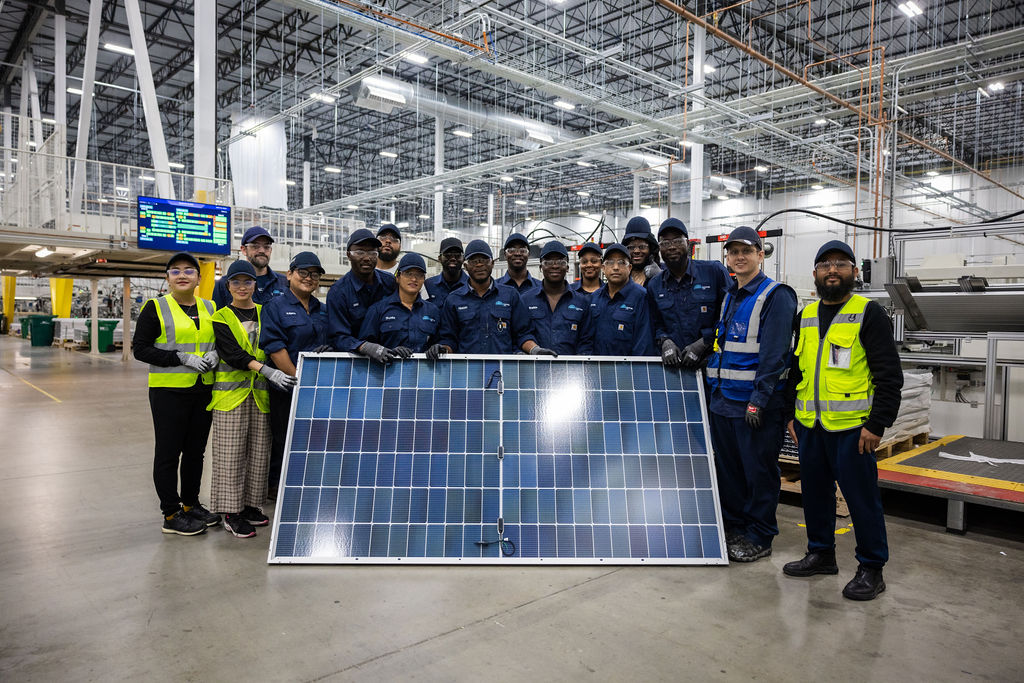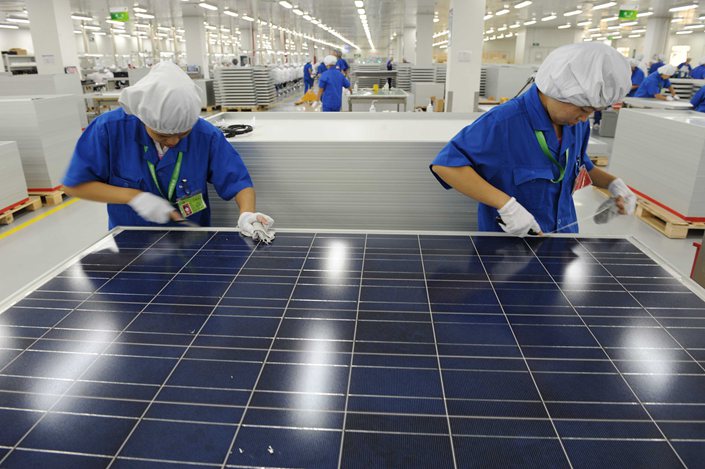An Unbiased View of Commercial Solar Panels Virginia
An Unbiased View of Commercial Solar Panels Virginia
Blog Article
Virginia Solar Incentives: Lumina Solar Focuses On Supplying Advanced Photovoltaic Solutions For Homes And Companies
History and Establishing
Have you ever wondered how a solar panel business springs from a simple spark of inspiration into a powerhouse of sustainable energy? It frequently begins with a vision-- one fueled by a mix of development, decision, and a pinch of serendipity. The journey of many solar companies mirrors the evolution of the innovation itself: from large, inefficient panels to streamlined, high-efficiency marvels utilizing the sun's bounty.
The Early Days
In the late 20th century, when solar energy was still a niche idea, leaders planted seeds for what would end up being an international movement. Imagine a small workshop filled with curious engineers, tirelessly explore solar batteries. Their passion was palpable, typically driven by a desire to combat environment modification and lower dependence on fossil fuels.
One such anecdote is about a creator who, inspired by a camping journey, understood that even in remote areas, the sun could power essential devices. This easy observation stimulated a company's mission to equalize access to clean energy.
Establishing Principles

- Innovation: Constantly pressing the borders of solar innovation to improve performance and resilience.
- Sustainability: Committing to eco-friendly production and lowering carbon footprints.
- Availability: Making renewable resource options cost effective and practical for daily users.
Turning points in Growth
| Year | Secret Event |
|---|---|
| 1985 | Company founded in a little garage, concentrating on research and advancement. |
| 1995 | Very first commercial solar panel product launched, getting regional attention. |
| 2005 | Broadened to global markets, welcoming international sustainable energy goals. |
| 2015 | Introduced cutting-edge solar panel technology with boosted energy conversion. |
Isn't it fascinating how these incremental steps, frequently overlooked, shape the energy landscape today? The solar panel business story is not practically technology; it's about a relentless quest for a brighter, cleaner future.

Developments in Photovoltaic Panel Technologies
Ever seen how some photovoltaic panels shine brighter and last longer? It's not magic; it's the science of photovoltaic performance. Modern solar panel business invest greatly in innovations like bifacial cells, which catch sunshine from both sides, enhancing energy harvest without expanding roof area. Have you ever wondered why some panels perform much better on cloudy days? That is because of advances in thin-film solar innovation, which thrives under diffused light conditions.
Item Variations Customized to Distinct Needs
One size never fits all. Photovoltaic panel suppliers now provide:
- Monocrystalline panels for maximum effectiveness and sleek aesthetics, perfect for space-constrained rooftops.
- Polycrystalline panels, which provide a cost-effective alternative without compromising excessive output.
- Building-integrated photovoltaics (BIPV), combining solar tech flawlessly into architectural aspects like windows and facades.
Selecting the best item isn't practically upfront expense; it's about matching your environment, energy goals, and long-lasting savings. For instance, homes shaded by trees require panels that stand out in low-light scenarios, something numerous neglect until energy expenses climb unexpectedly.
Technical Tips for Optimal Choice
- Examine the temperature coefficient-- lower worths mean panels lose less performance on hot days.
- Try to find panels with improved anti-reflective finishings to take full advantage of light absorption.
- Consider the panel's warranty not simply for problems, however for ensured power output over years.
- Don't underestimate the importance of the inverter technology coupled with the panels; it can make or break your system's efficiency.
Beyond Panels: Emerging Trends
Imagine photovoltaic panels that change their angle immediately to go after the sun-- tracking systems are ending up being more available, increasing yield considerably. Or solar tiles that mix invisibly into your roofline, changing your home into a silent, self-dependent power generator. These innovations are improving what a photovoltaic panel business uses-- not just items, however integrated energy options.
Market Presence and Global Operations
Ever question why some solar panel companies appear to sprout up in every corner of the globe while others hardly make a ripple? The distinction lies not just in innovation but in mastering the art of browsing diverse markets. Expanding globally resembles planting seeds in various climates-- you need to understand each environment's unique conditions to grow.
Take, for circumstances, the intricate dance of logistics and supply chain management. Shipping panels midway across the world isn't practically distance; it's about timing, customs, tariffs, and adjusting to regional demand variations. A business with robust global operations expects these variables, ensuring panels get here on schedule without pumping up costs. This insight is no little feat and typically separates industry leaders from fans.
Secret Methods for Expanding Market Presence
- Localized production: Establishing production hubs near target markets reduces shipping delays and import intricacies.
- Strategic partnerships: Working together with local companies speeds up market penetration and builds trust.
- Adaptive item style: Tailoring photovoltaic panel tech to weather, sun strength, and infrastructure nuances enhances performance and acceptance.
What about the human element? Solar panel business running globally must reconcile cultural differences and regulative subtleties without forgeting their core objective. For example, what works in a sun-drenched desert might fail in a humid coastal area. In some cases, the most innovative solution is merely listening-- absorbing regional insights to refine innovation and approach.
Specialists often recommend a phased rollout rather than a shotgun expansion. Why run the risk of overextension when determined development develops sustainable momentum? Scaling sensibly indicates balancing aspiration with functional strength - Solar Companies in Virginia. After all, in the race for sustainable energy dominance, persistence can be as valuable as speed
Ecological Effect and Sustainability Practices
When photovoltaic panels first emerged, lots of presumed they carried absolutely no ecological luggage. The reality is more nuanced. The production of website solar batteries includes rare earth metals and energy-intensive processes, which can leave a substantial carbon footprint before the panels even reach roofs. Yet, the real ecological expense depends greatly on the sustainability practices used by the photovoltaic panel company throughout the lifecycle of their items.
How often do we pause to consider what occurs to photovoltaic panels at the end of their beneficial life? Unlike batteries or electronic devices, photovoltaic panels can last 25-30 years, but disposal and recycling pathways stay underdeveloped in numerous regions. A business devoted to minimizing ecological harm will have a robust prepare for recycling photovoltaic materials, restoring valuable silicon, glass, and metals to prevent land fill accumulation.
Key Sustainability Techniques
- Using low-impact manufacturing techniques that decrease water and energy usage.
- Implementing closed-loop systems to recycle production waste back into new panels.
- Engaging in transparent supply chain audits to make sure ethical sourcing of basic materials.
- Designing panels for simpler disassembly to assist future recycling efforts.
It deserves keeping in mind that some solar business have actually pioneered ingenious approaches, such as integrating eco-friendly elements or utilizing less harmful chemicals throughout fabrication. This not only reduces environmental stress but also sets a precedent for the market. The concern stays: can the solar market truly pivot towards a circular economy model without sacrificing efficiency or affordability?
Specialist Tips for Evaluating Sustainability
- Ask about the company's dedication to carbon-neutral manufacturing and whether they balance out emissions.
- Investigate if they partner with accredited recycling facilities committed to photovoltaic panel waste.
- Look for transparency reports detailing ecological impacts and sustainability objectives.
- Think about the longevity and guarantee of panels as an indirect step of resource efficiency.
In the end, going with solar power ought to indicate more than just slashing electrical energy costs; it's about nurturing a future where energy is collected properly and waste is thoughtfully handled. Photovoltaic panel companies that accept this approach not just illuminate homes but likewise cast a brighter light on sustainable development.
Report this page